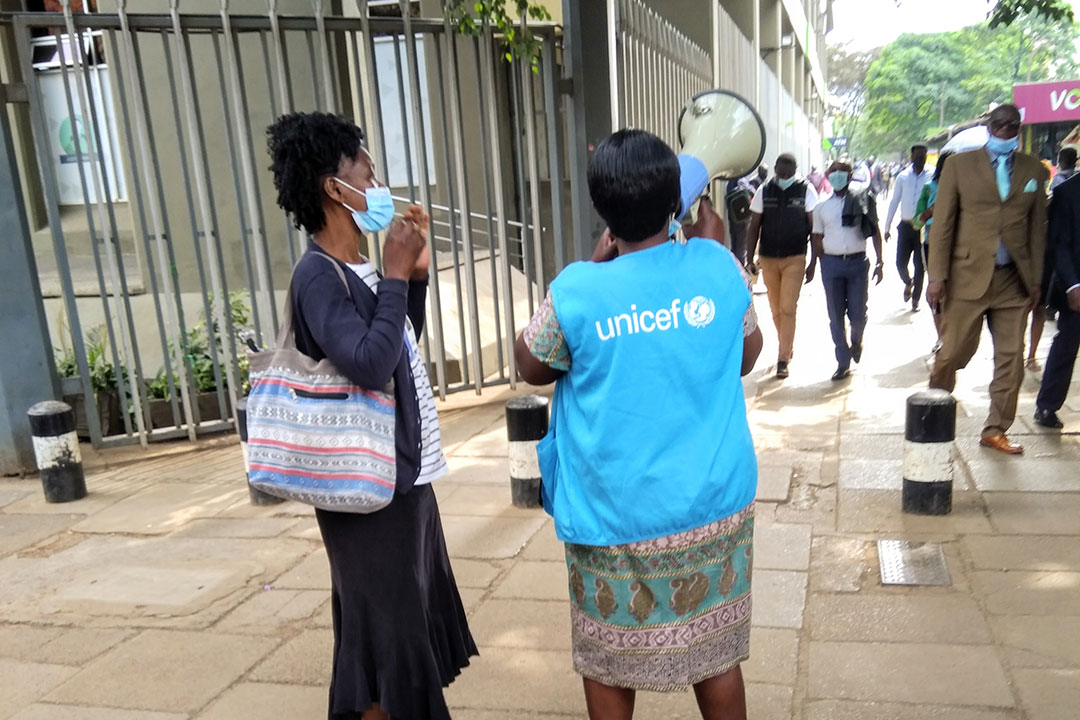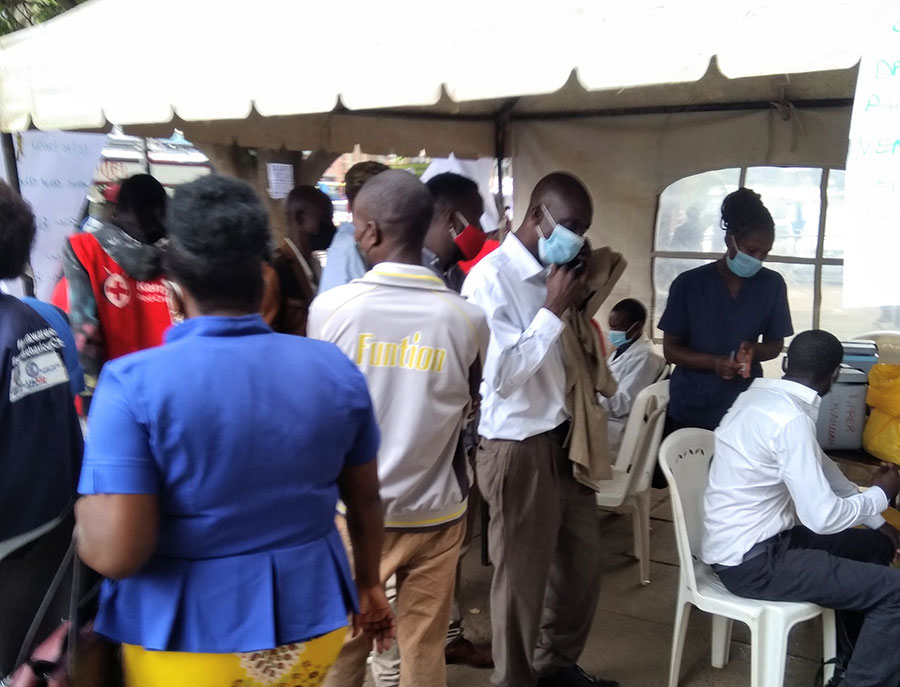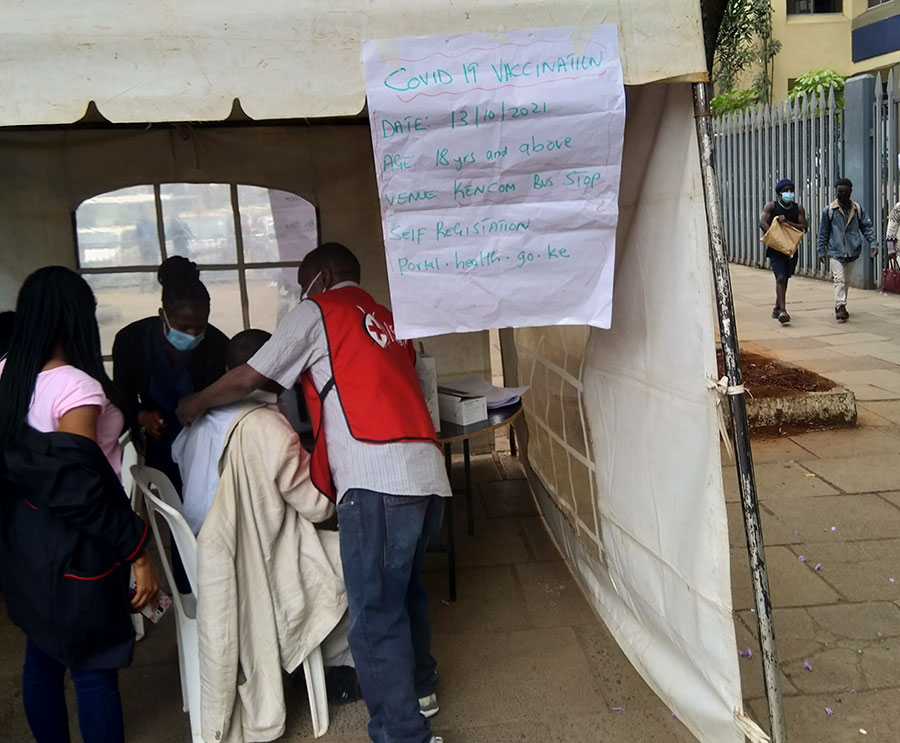Kenya’s weak link in the fight against COVID-19
On 7 October Kenya launched an ambitious campaign to vaccinate over a million operators in the public transport sector.
- 16 November 2021
- 3 min read
- by Mike Mwaniki

Kenya’s public transport system supports a half a million people directly and another half a million indirectly. It’s also one of the most high-risk sectors for COVID-19 in the country. “Ninety percent of Kenyans use the public transport sector to move from one point to the other,” Transport Cabinet Secretary James Macharia noted last month. “You are the frontline people. Without you, our health workers can’t go to work. We are much weaker without you.”
The country’s wider vaccination efforts, alongside other measures, are having an impact. On 20 October, President Uhuru Kenyatta lifted the COVID-19 curfew saying the national infection rate had declined significantly to below 5%.
He was speaking during the launch ceremony for a new campaign to vaccinate over a million public transport staff. The vaccination drive was rolled out under the theme ‘Pata Chanjo, Tuimarishe Usafiri’, which translates as ‘Get the vaccine to improve transportation.’

The drive is a multi-instititutional effort between the Health Ministry and other government institutions, in partnership with the federation of the public transport sector, an organisation advocating for the rights and interests of the sector.
Have you read?
Mr Macharia urged sector operators to adhere to the health protocols and also lauded the efforts that the Health Ministry has put in place to bring down case rates.
“The reduced positivity rate has seen Kenya removed from the red list, which is a big achievement,” he said, urging the industry to ensure the cashless system that is currently being deliberated by the Ministry is adopted. “Handling money is a problem as it cannot be sanitised. We will work with the National Transport and Safety Authority to ensure it is implemented.”
Following the launch, several vaccination centres were set up within the Central Business District bus stations in Nairobi where crews and passengers were inoculated against COVID-19 in an exercise that lasted for several weeks.
Starehe Ward Health Promotion Officer, Teresia Mukuna, has nothing but praise for the community health workers, who are mobilising crews and passengers using loudspeakers in various bus stations to participate in the vaccination exercise.
“Initially, we were vaccinating an average of 200 people at each bus stage but the numbers keep increasing as people become aware of the exercise. All people aged 18 and above who have not been vaccinated are eligible for inoculation,” said Mukuna.

A tour guide, Hezekiah Theuri, lauded the government for the initiative saying it was convenient as it allowed those working in the transport sector to be vaccinated in their places of work without queuing up in health facilities.

The country’s wider vaccination efforts, alongside other measures, are having an impact. On 20 October, President Uhuru Kenyatta lifted the COVID-19 curfew saying the national infection rate had declined significantly to below 5%.
He thanked Kenyans for exercising an admirable degree of civic responsibility in the fight against the disease and urged them to continue observing Health Ministry protocols to sustain the gains the country had made towards the full re-opening of the economy.









